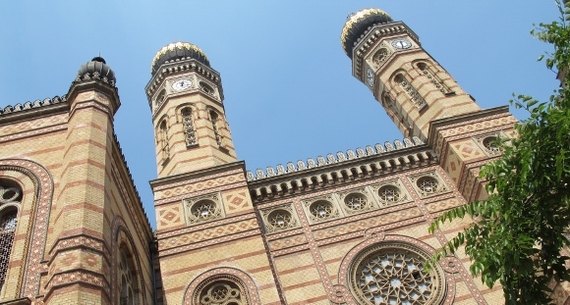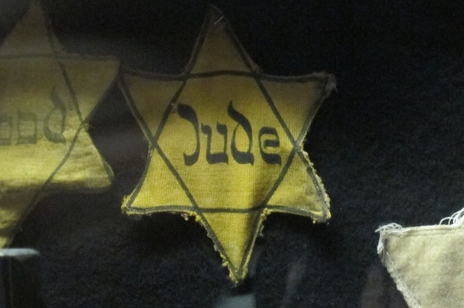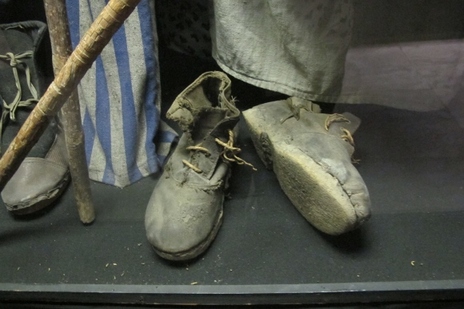Ernie Hollander and his family arrived at Auschwitz in 1944. He was seventeen years old and on his coat he wore a large yellow Star of David. His mother had sewn it there for him. Ernie and his family had traveled three days by train without food in a crowded cattle car from Iloshvo, a town in the Carpathian Mountains in what was then Hungary.
Ernie's father had been head of the local rabbinical council and a respected member of the community until the Nazis came and everything changed. From then on, Ernie's

The Dohany Street Synagogue, Budapest, Hungary. Photo by Barbara Newhall
family and the other Jewish townspeople were required to wear the yellow Star of David. The family business was confiscated. Ernie couldn't go to school, and the children who had once been his schoolmates pushed him into the street as they passed him by.
For three days - the entire train trip - the cattle car doors had been kept sealed. Several people had died, and there had been no way to remove their bodies. But, now, at last, the doors opened and a ramp was placed at the door.
Ernie watched his mother walk down the ramp ahead of him. She held Ernie's two youngest sisters in her arms, the five-year-old and the seven-year-old. A third sister, nine years old, walked alongside her mother.
At the bottom of the ramp, an official motioned Ernie's three sisters to the left and their mother to the right.
"My mother could have saved herself," said Ernie. "She was still young. She was in her thirties. She could work." Ernie's father and brothers could also work. But the three
small girls were too young to be of much use to the Third Reich. The guard told them to go to the left.
Ernie's mother refused to be separated. "I don't want to give up my children," she protested. And she went to the left with her daughters.
"She didn't know what means left," Ernie told me. "But I know in my heart that if my mother would know what's happening on the left, she would still not give up the children. Which mother would give up children? And she went with the children to the left. Five minutes later they were dead.
"At that time we didn't know," Ernie said. "But the people who were working in the
crematoriums and the gas chambers were Jewish people. After a few days we asked, 'Do you know what happened to these people who went to the left?'
"They said, 'You see that chimney over there where the smoke comes out? They were dead a half an hour after they arrived. That's where they killed all the people who went to the left.' And only then you found out that there were gas chambers."
After the war, Ernie migrated to Oakland, California, where he was active in his synagogue, Congregation Beth Jacob. He died in 2002 at the age of seventy-seven. I met Ernie in the course of conducting interviews for my interfaith book, "Wrestling with God: Stories of Doubt and Faith."
c 2015 Barbara Falconer Newhall. All Rights Reserved.
A version of this story first appeared on BarbaraFalconerNewhall.com, where Barbara riffs on life, family, books, writing, and her rocky spiritual journey.
If this story resonated with you, you might want to read "Beauty Is in the Eye of the Beholder, But What If There Is No Beholder?" Also, "My Mother's Magical Babushka."



